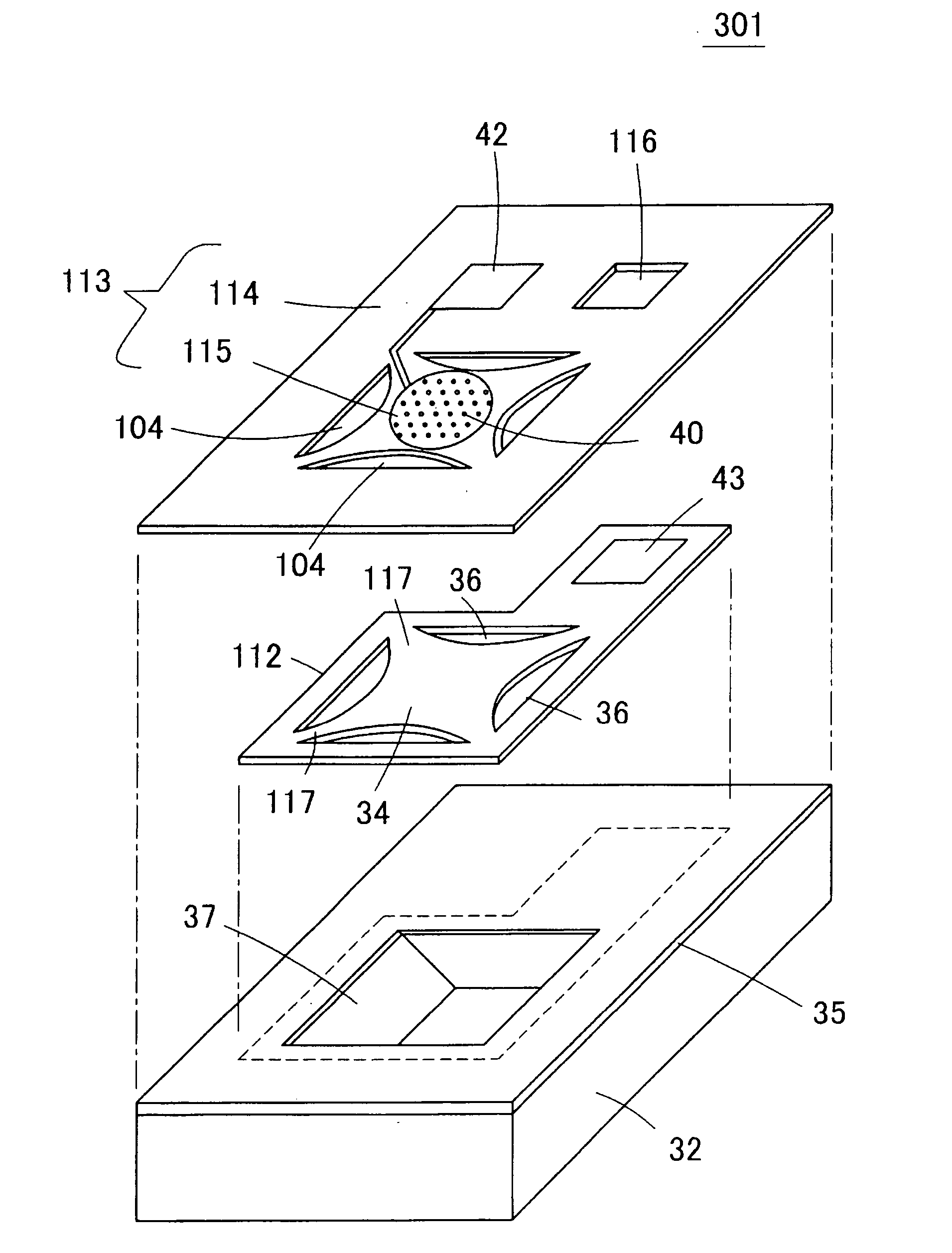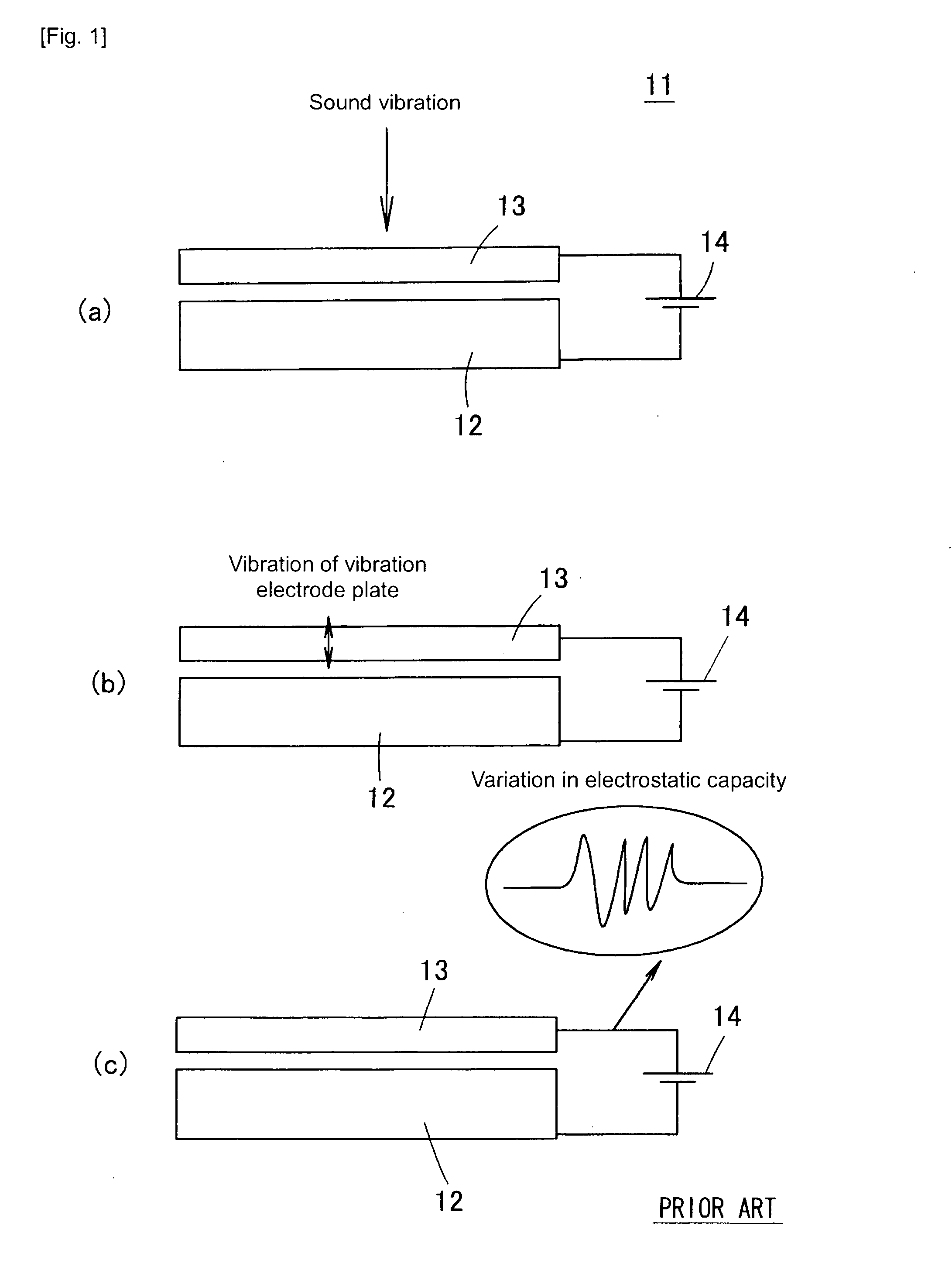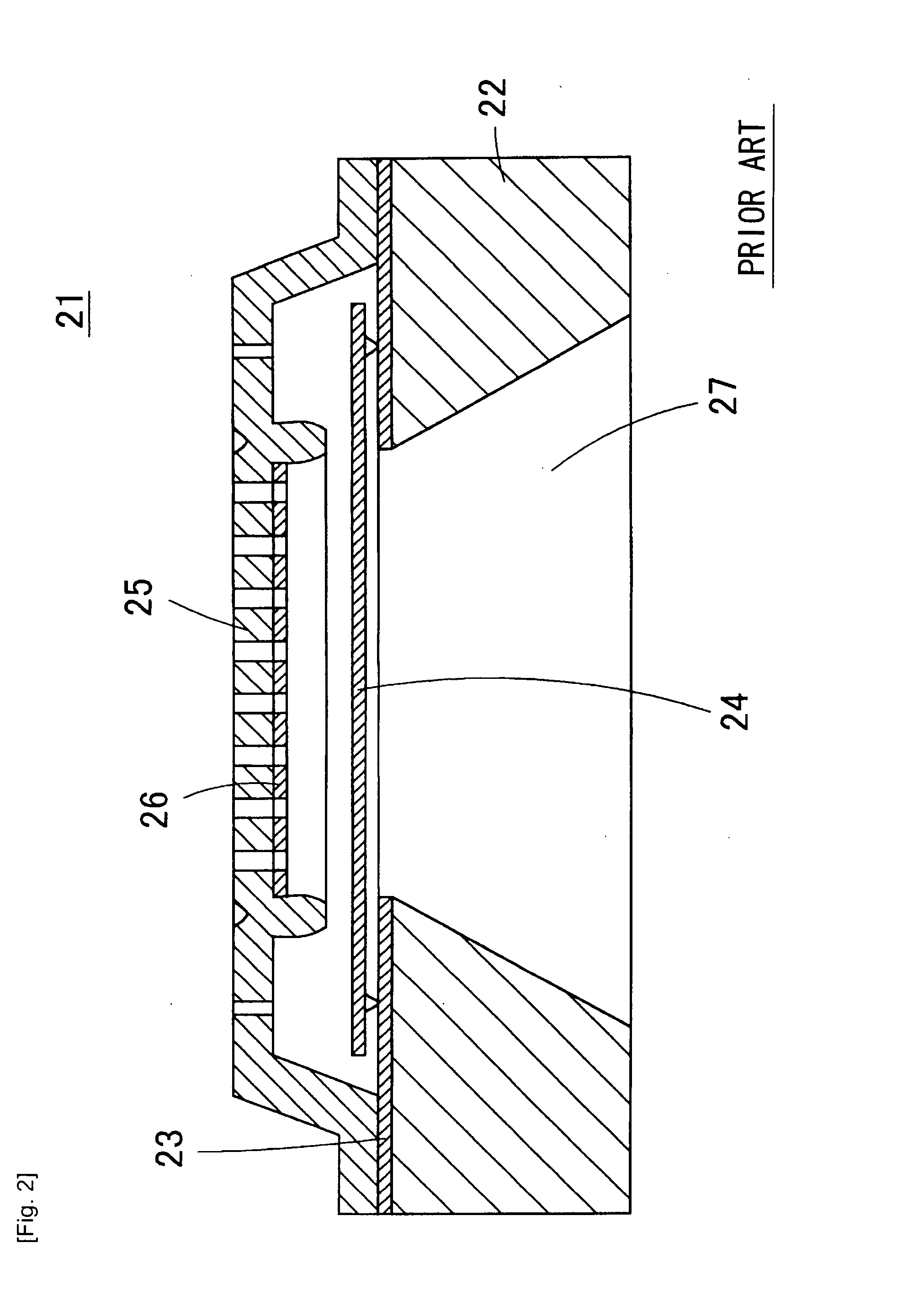Capacitive Vibration Sensor and Method for Manufacturing Same
a capacitive vibration and sensor technology, applied in the direction of subaqueous transducers, semiconductor electrostatic transducers, instruments, etc., can solve the problems of hysteresis and difficulty in miniaturizing capacitor-type microphones, and achieve the effect of minimizing the capacitive vibration sensor
- Summary
- Abstract
- Description
- Claims
- Application Information
AI Technical Summary
Benefits of technology
Problems solved by technology
Method used
Image
Examples
embodiment 1
[0072]FIG. 3 is a schematic exploded perspective view that shows a capacitive vibration sensor 301 in accordance with embodiment 1 of the present invention. FIG. 4 is a plan view of the capacitive vibration sensor 301, and FIG. 5 is a cross-sectional view of the capacitive vibration sensor 301. Moreover, FIGS. 6(a), 6(b) and 6(c) are plan views that respectively show an opposing electrode plate 113, a vibration electrode plate 112 and a silicon substrate 32.
[0073] The capacitive vibration sensor 301 has a structure in which: a vibration electrode plate 112 is formed on an upper face of a silicon substrate 32, with an insulating coat film 35 interposed in between, and an electrode pad 43 used for extracting a detection signal of a sensor is provided on the upper face thereof, and an opposing electrode plate 113 is formed on the vibration electrode plate 112 located on a concave section 37 with a space interposed in between, and an electrode pad 42, used for extracting a detection si...
embodiment 2
[0108] FIGS. 16(a) and 16(b) are plan views that show an opposing electrode plate 113 and a vibration electrode plate 112 to be used in a capacitive vibration sensor in accordance with embodiment 2 of the present invention. In embodiment 2, with the etching hole 36 of the vibration electrode plate 112 being maintained in a semi-elliptical shape, the etching hole 104 of the opposing electrode plate 113 is formed into a slit shape having a semi-elliptical arc shape.
[0109] In the capacitive vibration sensor 301 of embodiment 1, since the etching hole 104 of the opposing electrode plate 113 has the same size as that of the etching hole 36 of the vibration electrode plate 112, the opposing electrode plate 113 might also be vibrated by a sound pressure. Moreover, since a fluid directly passes from the etching hole 104 of the opposing electrode plate 113 toward the etching hole 36 of the vibration electrode plate 112 to cause a reduction in fluid resistance within the low frequency band, ...
embodiment 3
[0111] FIGS. 17(a) and 17(b) are plan views that show an opposing electrode plate 113 and a vibration electrode plate 112 to be used in a capacitive vibration sensor in accordance with embodiment 3 of the present invention. In embodiment 3, with the etching hole 36 of the vibration electrode plate 112 being maintained in a semi-elliptical shape, the etching hole 104 of the opposing electrode plate 113 is allowed to have a length of ½ of that of embodiment 2.
[0112] In embodiment 3 having this structure, the etching of the concave section 37 proceeds as indicated in FIGS. 18(a) and 18(a′), FIGS. 18(b) and 18(b′), FIGS. 18(c) and 18(c′), as well as FIGS. 18(d) and 18(d′). FIG. 18(a) is a plan view that shows a capacitive vibration sensor in accordance with embodiment 3, FIGS. 18(b) to 18(d) are plan views that show the silicon substrate 32, and each of FIGS. 18(a′) to 18(d′) shows a cross section of the capacitive vibration sensor taken along line A-A of each of FIGS. 18(a) to 18(d). ...
PUM
| Property | Measurement | Unit |
|---|---|---|
| Shape | aaaaa | aaaaa |
| Area | aaaaa | aaaaa |
| Electric properties | aaaaa | aaaaa |
Abstract
Description
Claims
Application Information
 Login to View More
Login to View More - R&D
- Intellectual Property
- Life Sciences
- Materials
- Tech Scout
- Unparalleled Data Quality
- Higher Quality Content
- 60% Fewer Hallucinations
Browse by: Latest US Patents, China's latest patents, Technical Efficacy Thesaurus, Application Domain, Technology Topic, Popular Technical Reports.
© 2025 PatSnap. All rights reserved.Legal|Privacy policy|Modern Slavery Act Transparency Statement|Sitemap|About US| Contact US: help@patsnap.com



